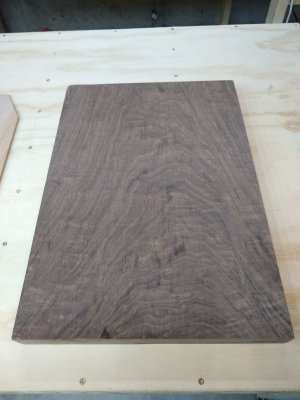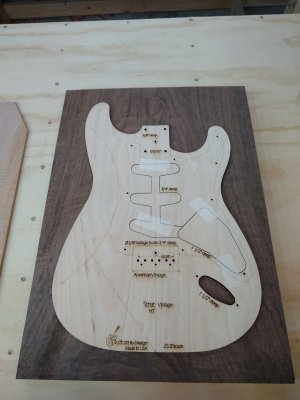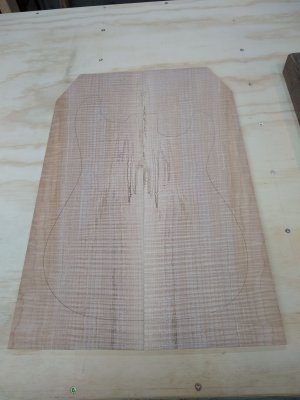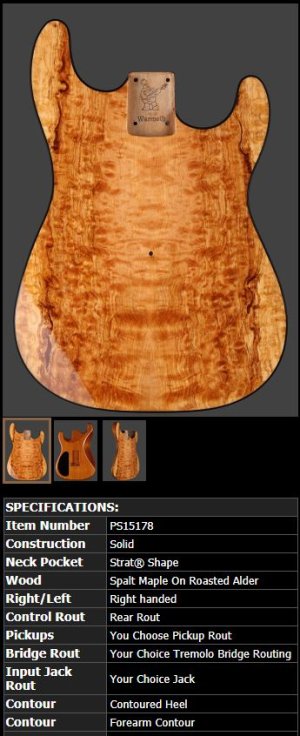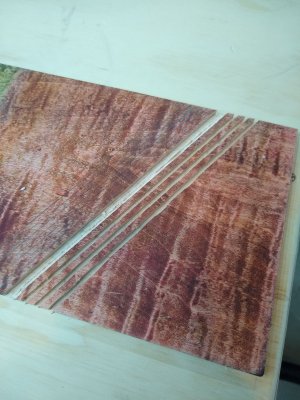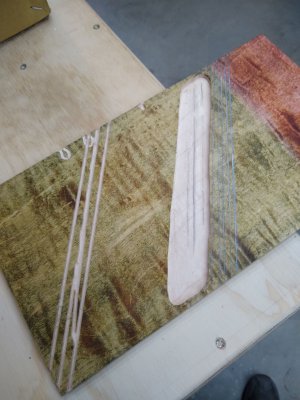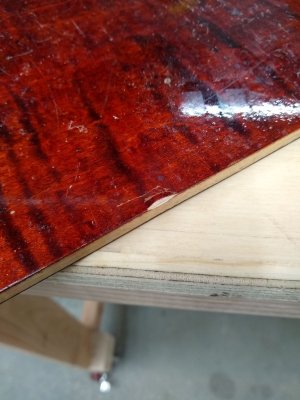War_in_D
Senior Member
- Messages
- 239
So I have decided to enter the realm of building my own guitar body (maybe bodies, depending on how this goes). Most smart people would start of with something simple, but I have never been accused of being smart.. So, I'm going what I would consider big on the first one! If I'm going down, might as well be in flames. It's going to pretty "run of the mill" as far as shape and layout, so nothing too fancy there. Just your normal Strat body shape, hardtail bridge with either a single hum/neck single or if things go well once I have gotten to the point of routing pickups, I may do a Jake E. Lee type of reversed singles layout for the middle/neck.
Where I kind of went out of the norm (I believe, for a first time) is in the selection of body woods, and the construction method. Now, this may be old hat to a lot of you but keep in mind this is my first build and it's a little scary. LOL This process will be slow, and very meticulous as I'm hoping not to screw anything up too badly. The back is a one piece walnut blank, with a really nicely figured 1/4" flamed/lightly spalted top (shown dry in the pics below). Depending on where the body weighs once it's been cut out, I may try my hand at some limited chambering/weight relief which should be interesting and I've done a ton of studying online about how to bend a 1/4" top for the forearm contour (this part freaks me out a little bit), and I'm all ears if anyone has any ideas on that.
Anyway, here are the raw materials.. Wish me luck, I have a feeling I'm going to need it.
Where I kind of went out of the norm (I believe, for a first time) is in the selection of body woods, and the construction method. Now, this may be old hat to a lot of you but keep in mind this is my first build and it's a little scary. LOL This process will be slow, and very meticulous as I'm hoping not to screw anything up too badly. The back is a one piece walnut blank, with a really nicely figured 1/4" flamed/lightly spalted top (shown dry in the pics below). Depending on where the body weighs once it's been cut out, I may try my hand at some limited chambering/weight relief which should be interesting and I've done a ton of studying online about how to bend a 1/4" top for the forearm contour (this part freaks me out a little bit), and I'm all ears if anyone has any ideas on that.
Anyway, here are the raw materials.. Wish me luck, I have a feeling I'm going to need it.



